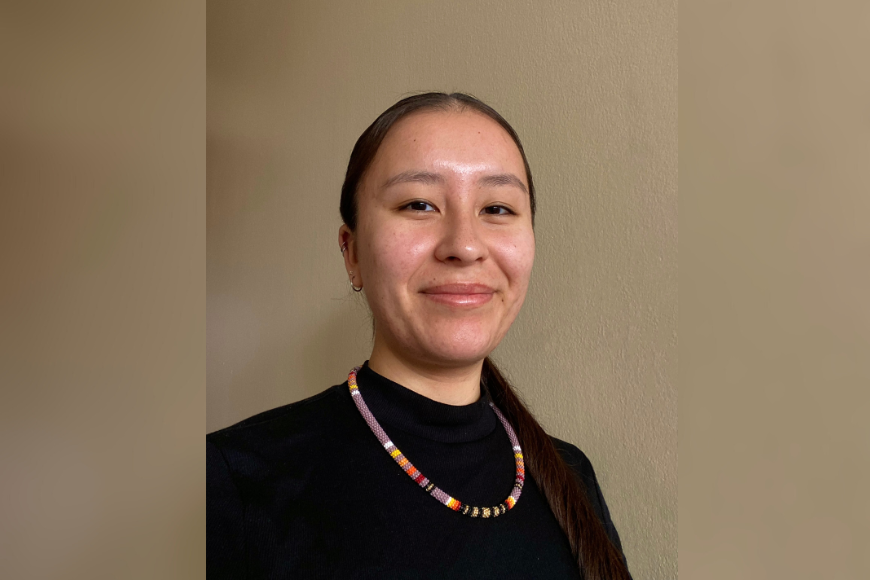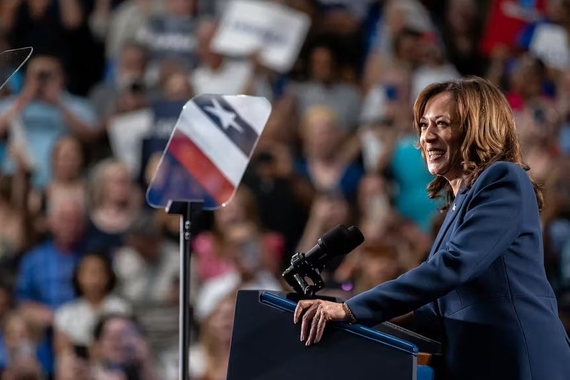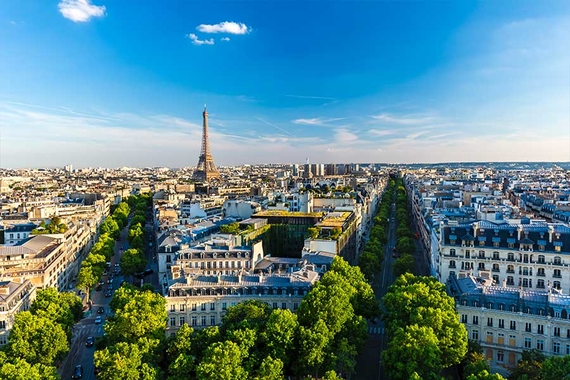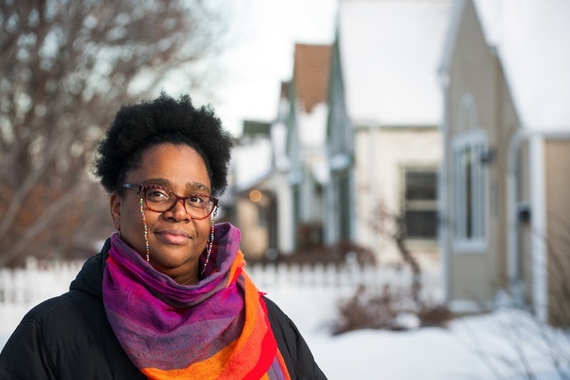Joleece Pecore: Artist, Scholar, Advocate
Truman Scholar Joleece Pecore is studying the past to understand the present, and she is also using her art to challenge inaccurate, harmful narratives surrounding Native identity and experiences. Read about how she’s using her voice—and art—to advocate for Indian Country.
What inspired you to pursue art and American Indian studies majors?
I knew that I wanted to major in American Indian studies in high school. I knew that I wanted to learn more about American Indian history and how that history shapes contemporary issues for Natives. But art has always been a big part of my life, too. I have artists on both sides of my family. So I considered minoring in art, but just knowing that I was going to be taking a lot of those classes, it made sense to become an art major. I don’t consider myself very outspoken or extroverted, so I use my art to advocate for myself.
Before coming to the U, I did mostly traditional paintings and drawings. Through the art department, I’ve learned about digital drawing, different ways to make paintings, and how to make films. A film course inspired me to make films that were centered around Natives—to create films from a Native perspective and show contemporary and authentic representations of us.
My film Reel NDNS won me second place at the University of Minnesota Film Festival and recognition in a couple other film festivals. The first half of the film is about what I believe non-Natives see: a connection to nature, stereotypical images of dreamcatchers and hunting, seeing us as forms of entertainment and almost mythical. The second half is about authentic and contemporary images of Natives through my family: we’re humans, we’re people. I filmed it during hunting season in Wisconsin, and one of my favorite parts shows my brothers learning to cut up a deer but just standing and looking at it for a while. It shows that we’re not mythical, we’re just people operating within this society. We adapt, we’re contemporary. We’re not just an old black-and-white image. My art is fueled by Native issues and my identity. I see that there are inaccurate representations of Natives and I’m trying to change that narrative.
What activities are you involved in?
I came to the U in 2020 so my first year was entirely online and I didn’t get to be as involved that much, but I did live in the American Indian Culture House and through that opportunity, met a couple of other first-year Native students.
Since then, I’ve become involved working as an intern with the Circle of Indigenous Nations and serving as a co-president of the American Indian Student Cultural Center. These organizations are really about building community–welcoming newly admitted and transfer Native students to campus and helping them feel more acclimated right away, hosting cultural and community events including weekly study nights and monthly Frybread Fridays. In the fall, the AISCC hosted a round dance and we just wrapped up with our spring powwow held at Maturi Pavilion.
Talk about the Truman Scholar application process.
I learned about the process from Timothy Jones, associate director of national and international scholarships, as I was applying for a Udall Scholarship. I had to write several essays about myself, where I want to go for graduate school, what I intend to study, and what I plan to do in the future after earning my graduate degree. I also had to ask people for letters of recommendation that spoke to my capabilities as a leader. And I had to be nominated by the University.
When I found out I was selected for the final interview process, I participated in an all-day interview event in St. Paul. One thing that I try to do is show my pride for my identity and show that Native Americans are still here, Native people are still thriving. So as part of my attire, I Indigenized my clothing and dressed in a ribbon skirt and beaded necklaces.
Afterward, I was so self-conscious of how I did and spent a week or two just analyzing my responses. But then Timothy Jones contacted me and said, “You’re going to get a call later today from a phone number you don’t know, you should answer it.” And President Joan Gabel called to deliver the good news. I was in shock, my mind was in so many different places, but I was really happy and told all of my friends and family right away.
When did you become interested in public service?
My family has shaped me a lot. My dad is a historian and I have a couple of family members who were a part of the tribal council for the Stockbridge-Munsee Band of Mohicans. My uncle used to be a tribal judge for that nation, and when I really started thinking about what more I could do with my degree, he told me that the best thing I could do for Indian Country is become a lawyer.
Originally, I didn’t really see myself as a lawyer, but over time, I’ve learned that I am capable of being more confident and becoming a leader. Before coming to the U, I wasn’t really involved in a lot, mostly just sports. So I brought that—teamwork and work ethic—with me to the U along with my passion for helping my people and community. Through becoming more involved, I’ve found that I was able to feel more confident in myself and bring what I’ve learned into my family and community.
After I graduate, I’m looking at programs at the University of Arizona, the University of New Mexico, and the University of Kansas to get a JD focusing on Indian Law. Eventually, I hope to practice in Wisconsin, where I’m from and where I’m most familiar with many nations that live there.
What does a liberal arts education mean to you?
I’m passionate about Native history and how much it affects today regarding contemporary Native issues. I don’t think a lot of people understand just how much United States history impacts what’s happening today—how we operate as a society, how we treat one another. So much of our current events are shaped by settler colonialism. For me, it’s important to study our histories so we can better understand and address what’s happening today.



